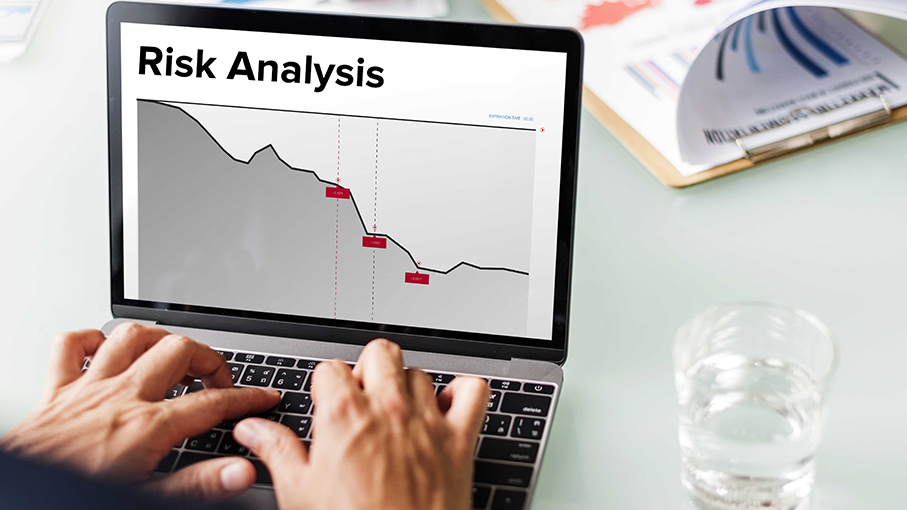Industrial installation can be built without a proper assessment of the risks and benefits it brings to installations, people and environment. Starting with the basic techniques.
The high levels of safety required in production plants requires careful studies and methods aimed at identifying, analyzing, and managing risks. The information flow resulting from the identification process must be structured to allow an unambiguous description of the hazard factors, the type of damage and the frequency of occurrence. In this first article dedicated to risk analysis techniques we will review the main survey tools used for preliminary and basic assessments.
SR (Safety Review)
Also called “Process Safety Review”, “Design Review” or “Loss Prevention Review”, it was the first technique to be used in history. It is preferably applied to an existing plant and involves a walk-through inspection of the plant.
For non-operational processes, the analysis should be limited to the evaluation of design drawings (P&I). A typical SR involves interviews with staff (managers, maintainers, engineers, managers, security officers, etc.). The safety assessment is heavily based on the cooperation of all operators and is generally focused on the most relevant risk situations. The result is a list of recommended actions, their justification, the responsibilities for implementation and the timeframe for implementation. A further analysis may be provided to verify the achievement of the objectives. SR should generally be accompanied by other safety assessment techniques.
CLA (Checklist Analysis)
Checklist Analysis uses a list of items or procedural steps to check the status of a system. CLAs, characterized by different levels of detail, are generally used to indicate the achievement of safety standards and practices. Those analysis are simple and can be used at any stage of process implementation. A checklist provides the basis for a standard process risk assessment and is usually combined with other risk assessment techniques. CLAs are limited by the experience of individual compilers so they need a team with different backgrounds. They are often implemented as simple forms of reorganization of known data and must be constantly updated. Many organizations have developed standard Checklists with a dual purpose of control and information.
Relative Ranking
It is an analysis strategy that allows you to compare attributes of processes or activities to determine if they possess risk characteristics that warrant further investigation. Relative ranking can also be used to compare different options regarding the location of a facility, placement of a piece of equipment, and outline design. The analyst provides numerical assessments of the level associated to each risk. Relative Ranking should preferably be applied in the early stages of process development or prior to the completion of the detailed design. Some standardizations of the methodology have been developed for different application fields. For example, the F&EI (Fire and Explosion Index) was developed for the assessment of explosion and fire risks in many areas where process facilities are present.
PHA (Preliminary Hazard Analysis)
The Preliminary Hazard Analysis (PHA) consists of the initial effort to identify the critical areas of a system, the definition of the hazards associated with them and the preliminary formulation of the design criteria for protection and safety systems. Once the hazards connected to the system have been identified, the qualitative category of the risk and the relative protection actions are analyzed and determined for each of them. For each cause of qualitatively high hazard ("intolerable" or "undesirable"), the countermeasures that must be adopted to reduce the relative risks are identified. The objectives of this analysis are to identify, classify and describe the faults, their origin, and possible consequences. Thus, the utility of PHA is the measurement of the safety and reliability of an industrial plant and the possible improvement of the same. Identifying all possible failures requires a team with cross-functional knowledge, which can use data and knowledge related to the system in question or a similar one, considering all operating modes, environmental conditions and the most common causes of failure of the systems considered.
WLA (What-If Analysis)
It is a brainstorming approach, often used in the early stages of project development and in the early part of the process, in which a group of experienced people ask questions or provide feedback about possible undesirable events. The what-if analysis should be carried out by a team consisting of plant managers and security experts. The team leader is critical as he or she conducts the analysis through an organized sequence of questions such as "What is related to. . . " or "What if..." etc. The analysis is carried out through the identification of the risk, the evaluation of the causes and the consequences. Based on the responses to the "What-If" question and the level of risk associated with those responses, the staff responsible for the analysis will identify specific actions or measures. The questions classified and sorted into specific areas of interest (electrical safety, fire protection, personal safety) may relate to any abnormal condition, not just component breakdowns and process changes.


